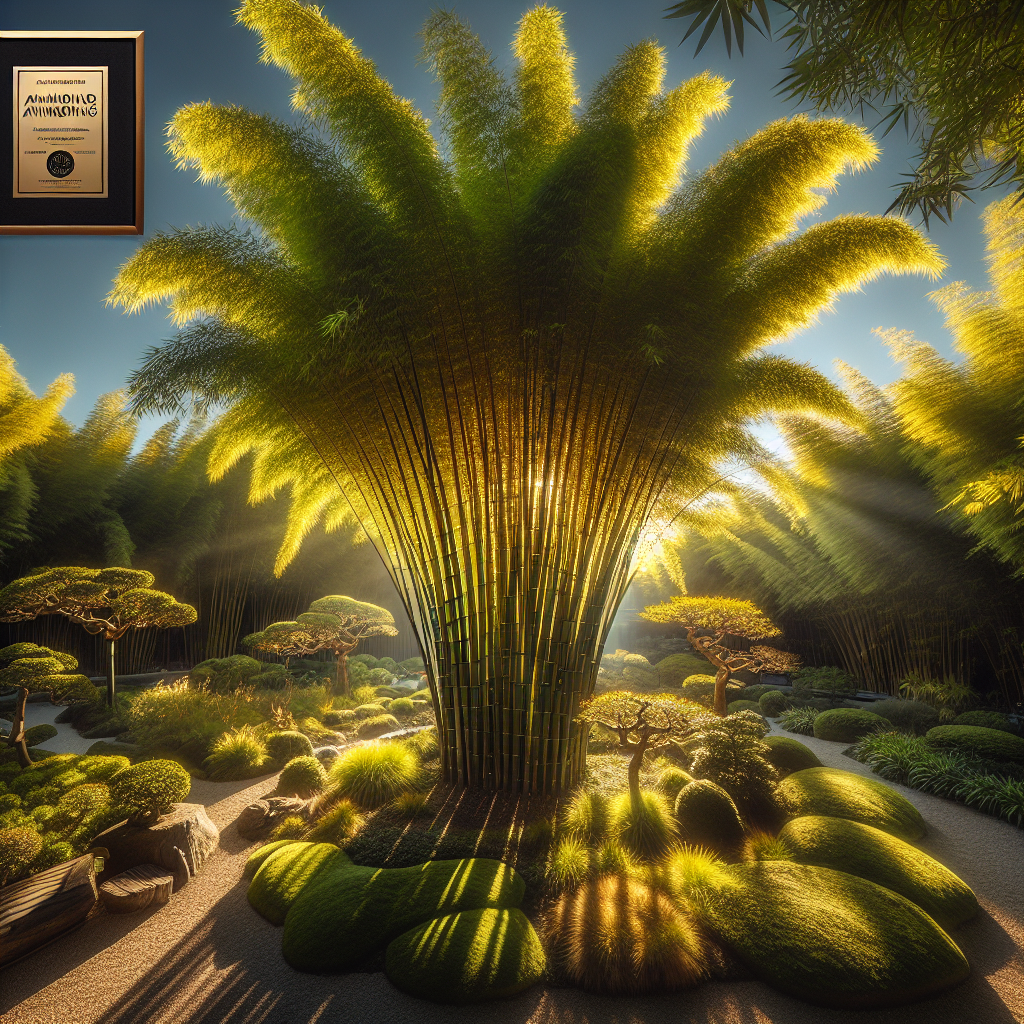[ad_1]
Creating a Tropical Oasis: Using Bamboo Palm in Your Landscape Design
If you’re looking to create a lush, tropical paradise in your outdoor space, consider incorporating the beautiful and versatile Bamboo Palm into your landscape design. Also known as Chamaedorea seifrizii, the Bamboo Palm is a popular choice for bringing a touch of the tropics to any garden or outdoor living area. With its gracefully arching fronds and easy care requirements, it’s no wonder that this stunning plant is a favorite among both professional landscapers and home gardeners alike.
In this comprehensive guide, we’ll explore the many benefits of using Bamboo Palm in your landscape design, as well as provide valuable insights into caring for this tropical beauty and incorporating it into your outdoor space.
Benefits of Using Bamboo Palm in Your Landscape Design
Bamboo Palm is a popular choice for landscape designers and garden enthusiasts for a variety of reasons. First and foremost, its graceful, feathery fronds and compact size make it an excellent choice for adding a touch of greenery to any outdoor space. Whether you’re looking to create a lush, tropical retreat or simply want to add a pop of vibrant green to your garden, Bamboo Palm is an ideal choice.
In addition to its aesthetic appeal, Bamboo Palm is also prized for its low-maintenance nature. Thriving in a wide range of conditions, this plant is well-suited to a variety of landscapes, from shady gardens to sunny patio spaces. It is also relatively pest resistant, making it an excellent choice for gardeners looking for a fuss-free plant that will thrive with minimal intervention.
Furthermore, Bamboo Palm is known for its air-purifying properties. Like many other houseplants, this tropical beauty has been shown to filter harmful toxins from the air, including formaldehyde, benzene, and trichloroethylene. This makes it an excellent choice for creating a healthy, vibrant outdoor living space.
Caring for Bamboo Palm
Caring for Bamboo Palm is relatively straightforward, making it an ideal choice for both novice gardeners and seasoned pros alike. When planting Bamboo Palm, be sure to choose a well-draining soil mix, and select a location with dappled sunlight or partial shade. While Bamboo Palm can tolerate a range of lighting conditions, it prefers to be shielded from direct sunlight, which can scorch its delicate fronds.
Watering is also important for the health and vitality of Bamboo Palm. While this plant is relatively drought tolerant, it thrives when kept consistently moist. Water your Bamboo Palm when the top inch of soil feels dry to the touch, and be sure to empty any excess water from the plant’s saucer to prevent root rot.
In terms of fertilization, Bamboo Palm benefits from a balanced, all-purpose fertilizer applied every two to three months during the growing season. Be sure to follow the manufacturer’s instructions and dilute the fertilizer to half-strength to avoid damaging the plant’s delicate roots.
Sourcing Bamboo Palm
When it comes to sourcing Bamboo Palm for your landscape design, there are a few options to consider. Many local garden centers and nurseries carry Bamboo Palm, making it readily accessible for homeowners and landscapers alike. If you’re unable to find Bamboo Palm locally, consider reaching out to online retailers, who often carry a wide range of tropical plants and offer convenient shipping options.
When sourcing Bamboo Palm, be sure to choose healthy, vibrant specimens with no signs of disease or distress. Inspect the plant’s fronds for any signs of discoloration or damage, and check the soil for signs of pests or disease. It’s always best to start with the healthiest plants possible to ensure a successful and thriving landscape design.
Incorporating Bamboo Palm Into Your Landscape Design
Once you’ve sourced your Bamboo Palm, it’s time to consider how best to incorporate it into your landscape design. This versatile plant lends itself well to a variety of applications, from standalone specimens to group plantings and lush, tropical borders.
One popular option for incorporating Bamboo Palm into your landscape design is to use it as a focal point in a tropical-themed garden or outdoor living space. Planted alongside other tropical beauties such as bird of paradise, elephant ear, and hibiscus, Bamboo Palm can serve as a stunning centerpiece that brings a touch of the tropics to your outdoor oasis.
Bamboo Palm also pairs well with a variety of other tropical plants, including ferns, calathea, and philodendron. Consider incorporating it into a lush, layered planting scheme, with Bamboo Palm serving as a mid-height focal point that adds visual interest and texture to your garden.
For a more modern or minimalist look, consider using Bamboo Palm as a standalone specimen, planted in a sleek, contemporary container. This approach showcases the plant’s graceful form and brings a touch of greenery to urban balconies, patios, and courtyards.
As with any landscape design, it’s important to consider the unique conditions of your outdoor space when incorporating Bamboo Palm. Whether your garden receives full sunlight, partial shade, or deep shade, Bamboo Palm can thrive with proper care and placement.
In conclusion, Bamboo Palm is a versatile and beautiful addition to any landscape design, offering a host of benefits for both home gardeners and professional landscapers. With its graceful fronds, low-maintenance nature, and air-purifying properties, this tropical beauty is well worth considering for your outdoor space. Whether you’re looking to create a lush, tropical retreat, add a pop of green to your garden, or bring a touch of the tropics to a small outdoor area, Bamboo Palm is an excellent choice. With proper care and thoughtful placement, Bamboo Palm can thrive in a wide range of conditions, bringing a touch of the tropics to your outdoor oasis.
[ad_2]




